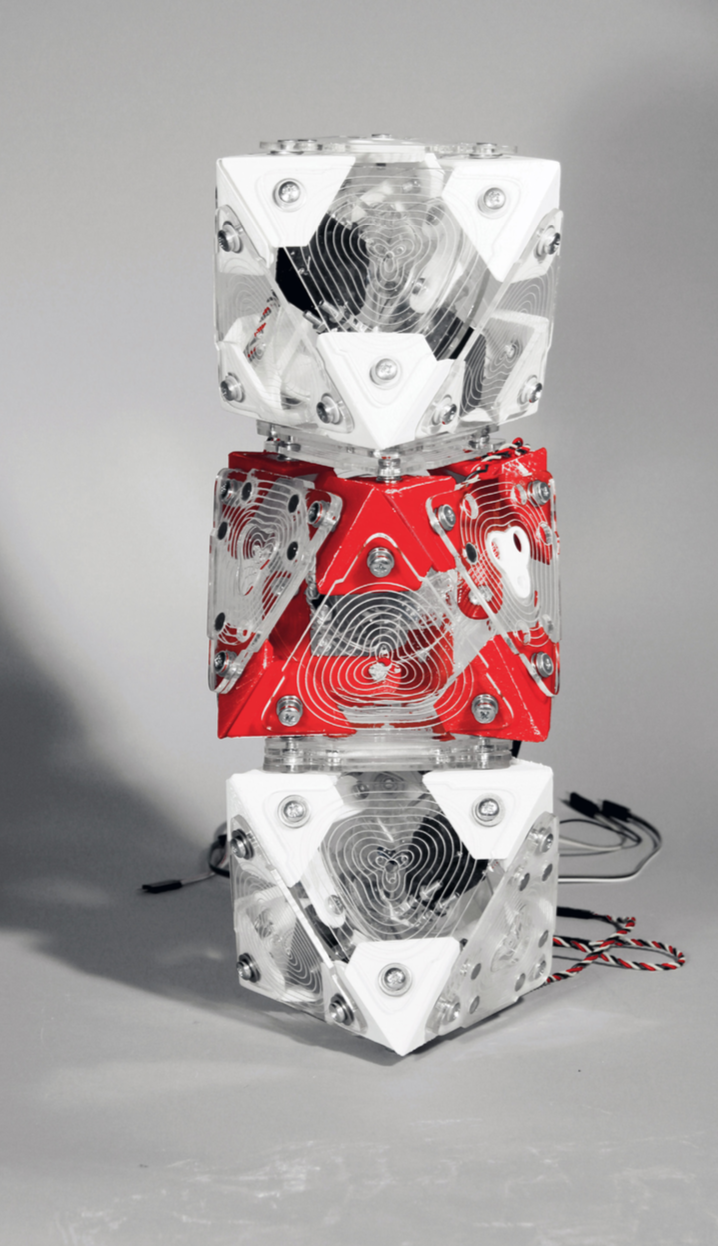
study of emergent behaviour |
a synergetic - i.e. actively transforming - unit has the capability to change not only its own state but when operating in a field re-configure its sur- rounding. in a butterfly effect of onpassing reactions, the local change of the active unit has a global impact on all passive units within the same system.
in a series of physical and digital tests, overall system behaviour was tested to predict and control local and global changes of organization.
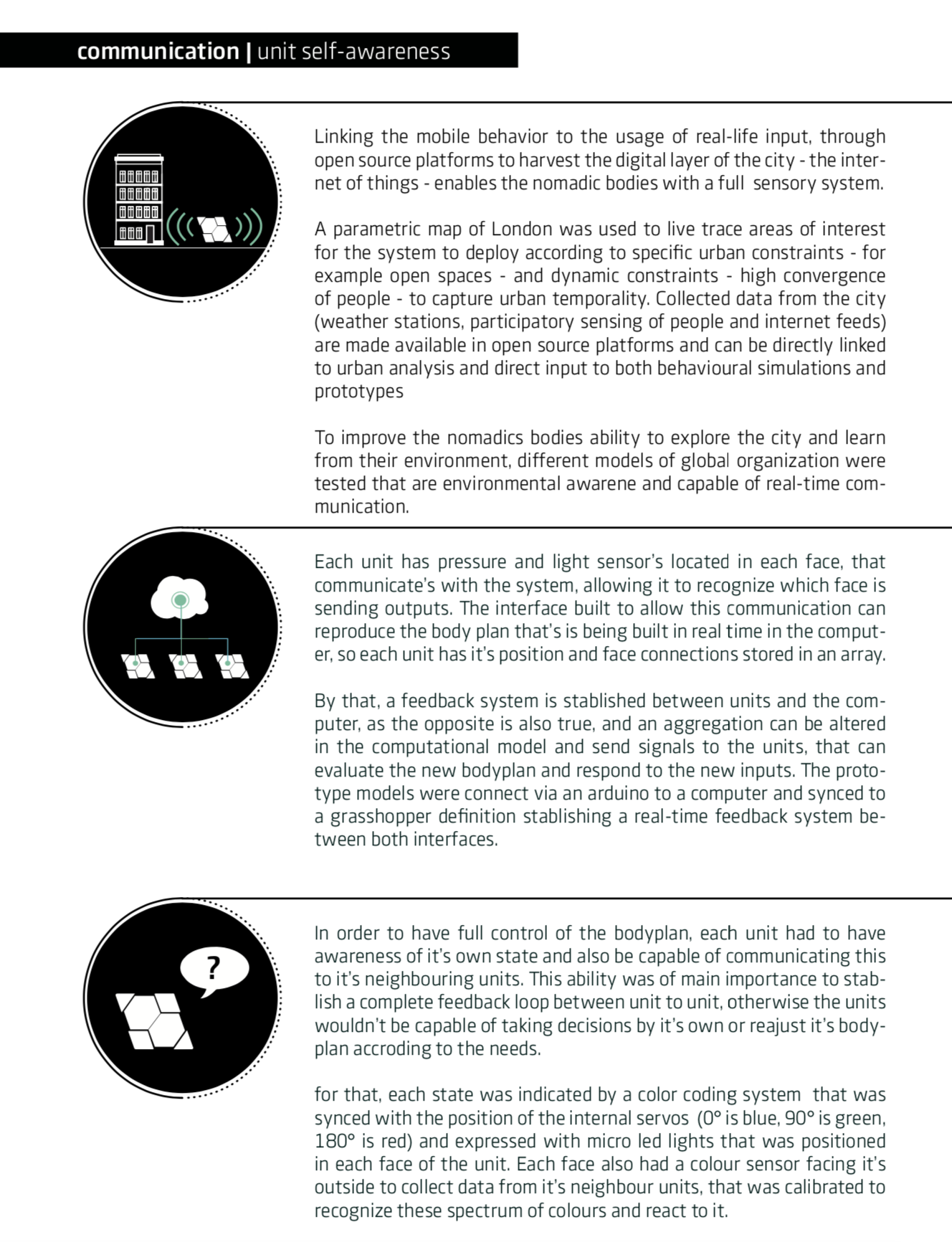
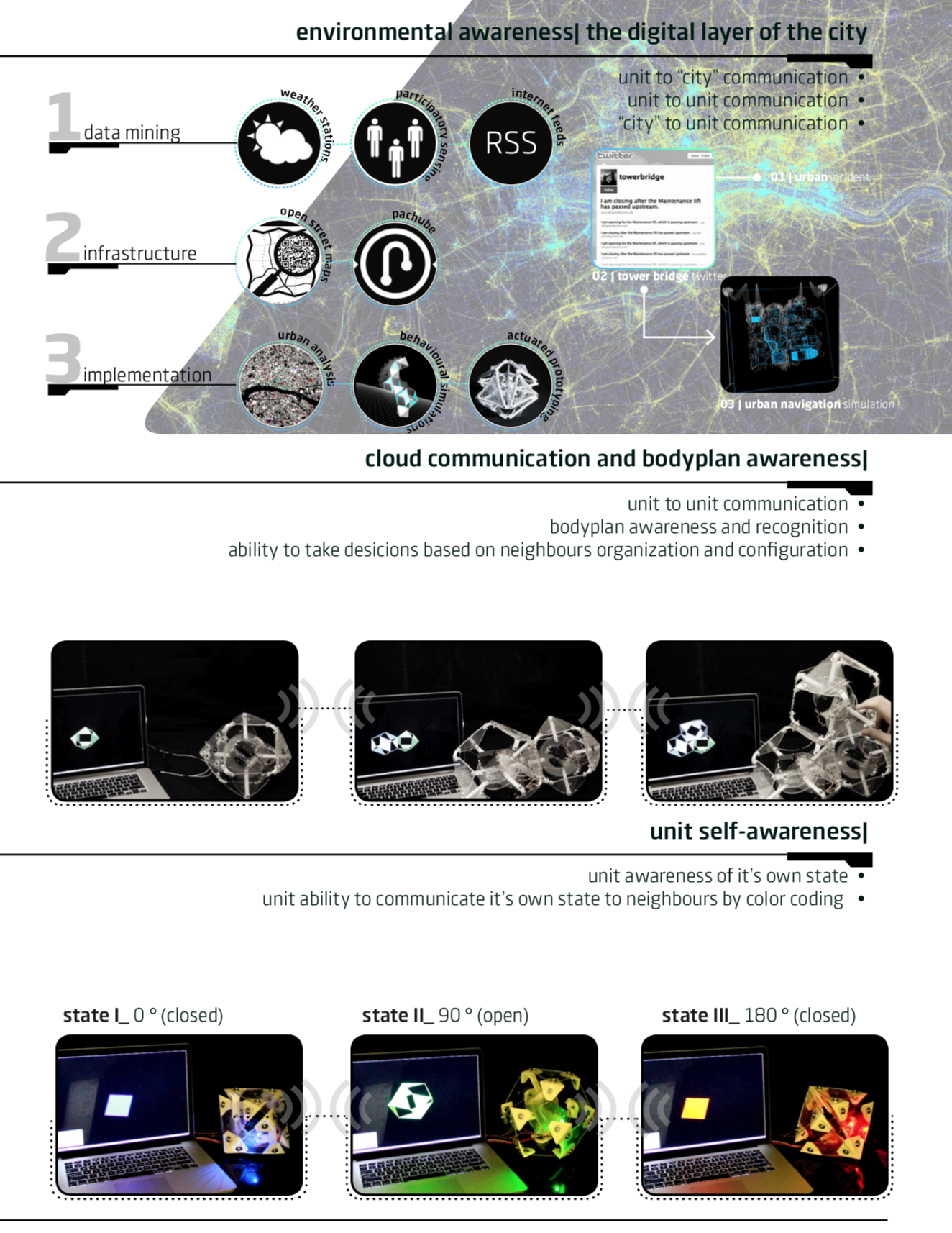
the “conversation theory” |
In order to understand and emulate the behavior and communication of the units and stablishing a parallel to Gordon Pask’s Conversation Theory - where inter- actions leads to construction of knowledge - it was developed simulations of autonomous behavior in a digital environment, creating a framework for the simulations and prototypes to work together, from physical to digital syncing their behaviour both to achieve control and as well to visualize its self-aware- ness.
Units would search for and specific goal, with the ability of adapting and making local decisions to achieve that.
The ability to communicate with the external world, but also to sta- blhish a relation between machines is of main of main importance for the development of an intelligent system, that could learn and adapt.
The main goal was to develop strategies for collective behaviour, starting with state indication and recognition, By face to face communication units are capable to re-construct their bodyplan like “chinese whispers” each identifying the states of position of their neighbour.
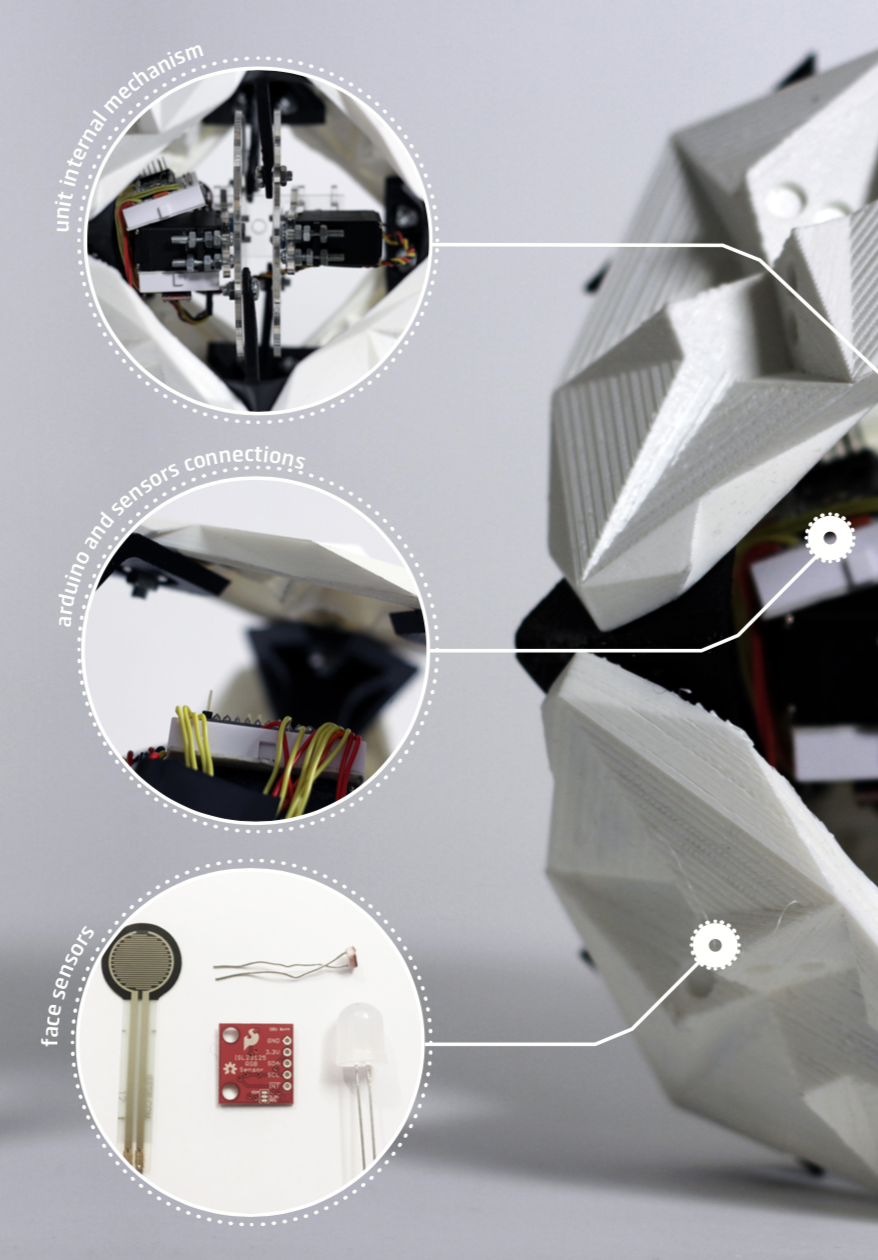

generative communication
Once the framework to allow the communication from unit to unit, unit to computer and unit to environment was settled, the behaviour and ability of the units to take decisions could be explored.
To introduce the idea of generative communication and decision making it was developed an algorithm based in the C.A. logics, that allows units to respond to neighbours behaviors. The signal is passed from unit to unit, triggering a chain reaction of relational unit movement, by changing the state and consequent behaviour of the next one (i.e. “state +1”).
The idea of a generative communication system explicitated the need of a greater un-
derstanding and subsequent control of the collective behaviour of the units. Specific sequences of activation could generate different patterns of movement, which led to a more specific study of these patterns, that was translated into constrains for the system.
In order to achieve movement in different directions, like directional movement, rota- tion, spiraling, etc., different choreography patterns were studied. These specif- ic coreographys become an important feature of the research, as bodyplans behaviour are directly related to the sequence and method of activating units.
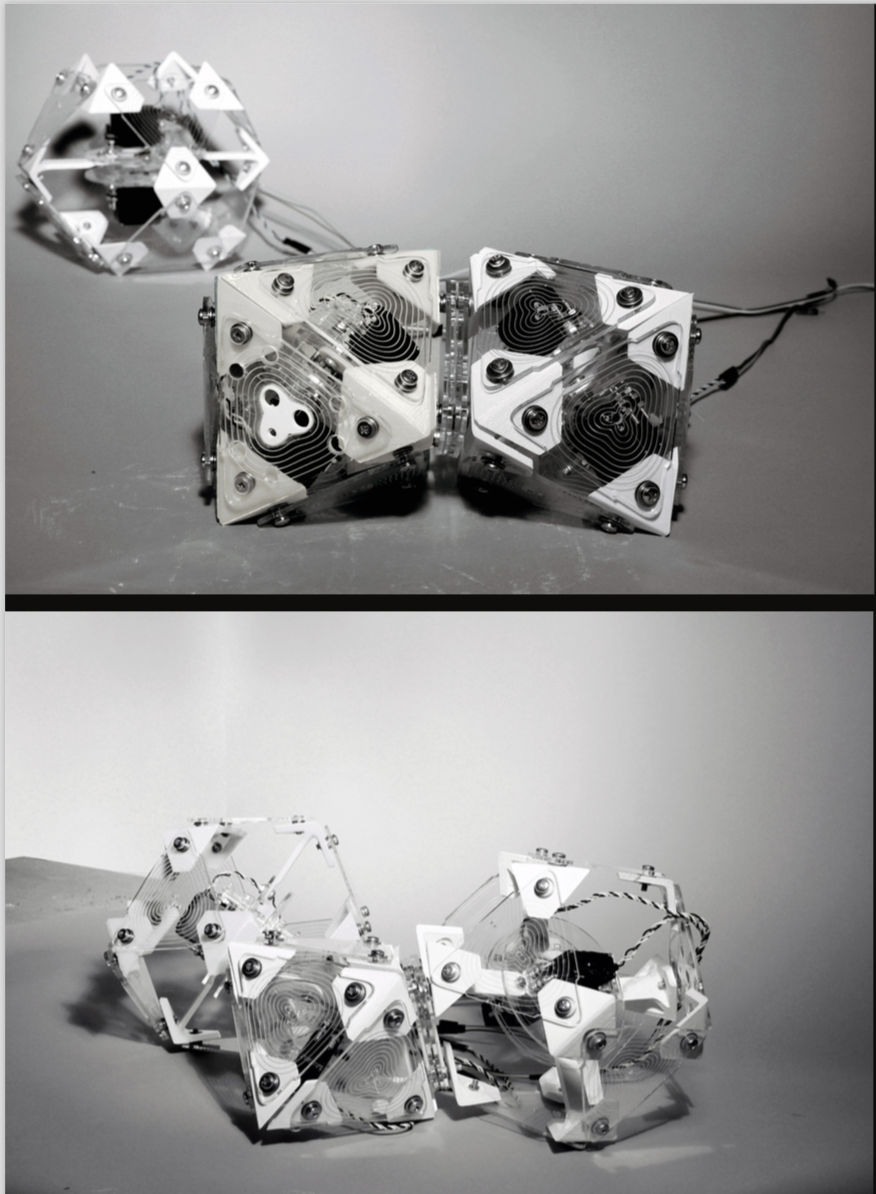
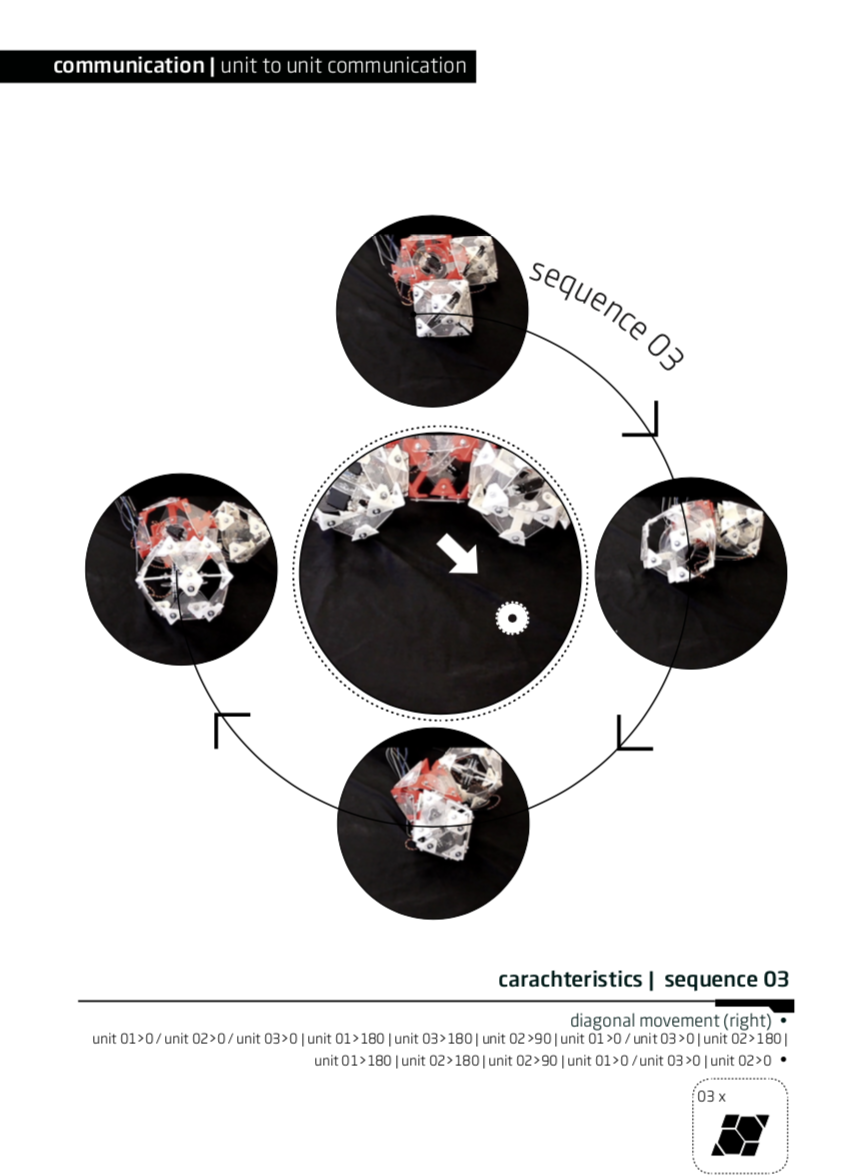
unit communication | generative responding
Similar to cellular automata logics, each unit has three different states, that chang- es the relations through the grid. To trigger a chain reaction, the first unit receives an input signal that gets passed on to neighboring units that reacts differently, depending on it’s current state but also the state of it’s neighbours.
The logics of changing states considers that each step should be “state +1”, which triggers an endless loop, where units that reachs state “3” (180°) draws back to state “2” and then to state “1”.
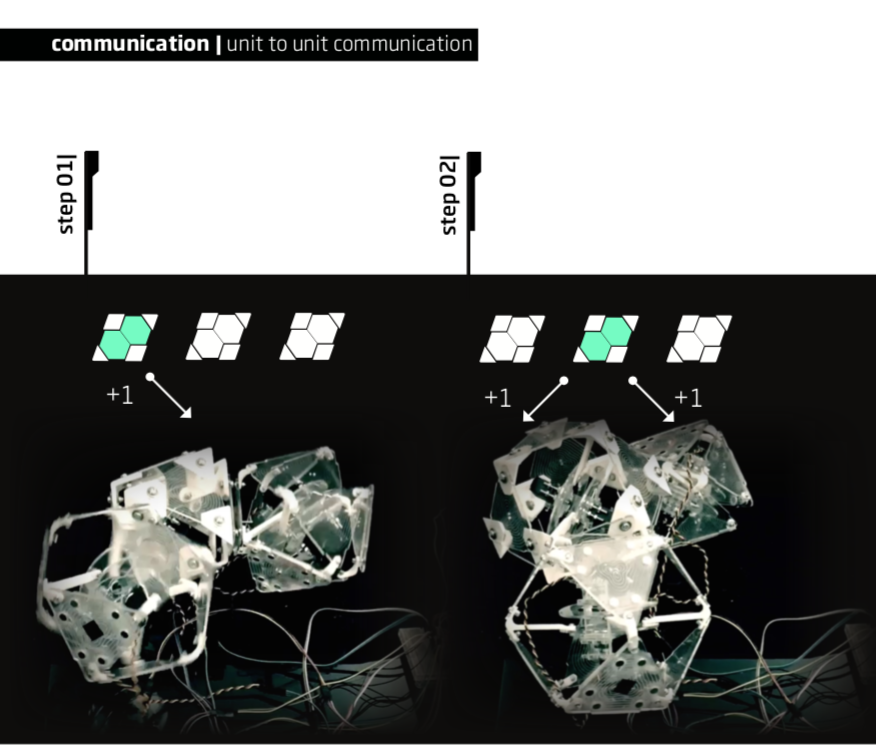

 Bart//Bratke
Bart//Bratke
Discussions
Become a Hackaday.io Member
Create an account to leave a comment. Already have an account? Log In.